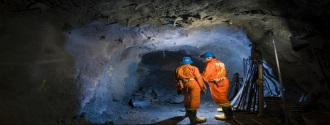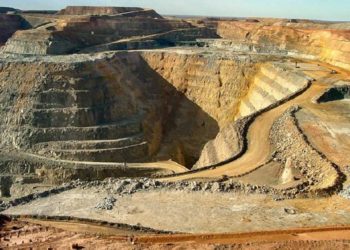Canadian exploration and development company Shore Gold Inc. is closing in on the advanced stages before development of its multi-billion dollar Star-Orion South Diamond Project, located in the Fort á la Corne Forest of Saskatchewan. The project, which has gone through rigorous testing, sampling and environmental review, has shown tremendous potential since it was first discovered in the late 1980s, and is expected to become the first diamond mine in the province.
Diamonds in Saskatchewan
The world-class diamond mining project will be comprised of two open pit mines that would excavate some 45,000 tons of rock per day for more than 20 years. According to Senior Vice President of Exploration and Development, George Read, the project has uncommon appeal for a variety of reasons. The economics of a diamond mine are dependent not only on tonnes and grade of the kimberlite ore but also on the average price of the diamonds. The average diamond price is unique for each diamond mine. In 2014 the world average rough diamond price was US$116 per carat, the Canadian average was US$173 per carat and the Star – Orion South Diamond Project had an average price of US$210 per carat.
“While Star and Orion South have lower diamond grades (10-20 cpht), they are very large kimberlites and much large than those in the Northwest Territories. People also fail to understand the importance of the coarse size frequency distributions of their diamond populations. There is a significant opportunity for the recovery of plus 100 carat stones from the future production of these mines. During evaluation, 49 and 45 carat stones were recovered from Star and Orion South, respectively,” said Read.
So far, the company’s underground bulk sampling has recovered 10,966 carats of plus 1.0 millimetre commercial goods from Star and 2,346 carats from Orion South. The most valuable stone recovered to date from Star was an 11.96-ct Type IIA worth US$12,500 per carat, and from Orion South a 10.53 carat fancy yellow valued at US$8,000 per carat.
“When the 11.96 carat stone is cut and polished it will probably be a D color,” said Read. “They are the most perfect crystal white color.”
Despite the global financial crisis of 2008, the project advanced to the point of a feasibility study, completed in July 2011. The feasibility study estimated probable reserves of 279 million tons (diluted) with an average grade of 12.30 cpht, containing 34.4 million carats of diamonds that could be economically extracted over the 20 year lifetime of the mine.
Fort á la Corne
Shore Gold commenced its diamond exploration activities in the Fort á la Corne Forest in 1996 with the discovery of the Star Kimberlite on claims that are held 100 percent by Shore Gold. After initial exploration of Star with core and limited large diameter drilling (LDD), Shore Gold elected to sink a shaft in order to collect an underground bulk sample for diamond valuation purposes. In February 2005, the publication of the initial results of a 3,050 carats from the underground bulk sample at US135 drew significant attention to the project. Shortly after this diamond price announcement, Newmont Mining participated in a major financing round and acquired a 9.9 percent equity position in Shore Gold. Shore Gold’s claims containing the Star Kimberlite were adjacent to an extensive group of claims, containing more than 60 kimberlites, known as the Fort á la Corne Joint Venture: De Beers (42.245%), Kensington Resources (42.245%) and Cameco (15.51%) with De Beers as the operator. With assistance from Newmont, Shore initially merged with Kensington Resources in 2005. Subsequently in 2006, Shore and Newmont acquired all the claims of the FALC-JV from De Beers and Cameco. Shore currently holds a 68 percent ownership position in the FALC-JV. While Newmont Canada FN Holdings ULC holds 32 percent.
Adversity
Lao Tzu said it best: “A journey of a thousand miles starts with a single step.”
In early December 2014 Shore Gold received a positive decision from the Federal Minister of Environment on the Environmental Impact Statement (EIS) for the project. While all technical information for the EIS was provided to the Province of Saskatchewan in late 2014, the final decision on the EIS is still awaited from the Ministry of Environment of Saskatchewan.
“We received a positive federal decision on the EIS but we’re still waiting on the provincial decision,” said Read.
The evaluation of Orion South, including underground bulk sampling, LDD and core drilling was curtailed by the world financial crisis in early 2009. While there was sufficient information for a mineral resource estimate on Orion South, a significant proportion of the resources fell in the inferred category. Subsequent to the publication of the feasibility study in 2011, Shore technical staff saw an opportunity to significantly increase the mineral resource estimate for the Orion South Kimberlite using a relatively low cost LDD and core drilling program. Shore successfully raised the capital to fund this drilling in late 2014 and the drilling was completed by July 2015. Shore considered it very important to ensure that they enlist the most qualified person it knew to lead the resource estimation process: Peter Ravenscroft.
“He has an extensive background in mineral resource with multi commodities and has worked on more than 10 major diamond deposits, including Canadian diamond mines Diavik and Ekati.
Late last year, the company announced the Revised Mineral Resource Estimate for the Star – Orion South Diamond Project. The report, which will now be incorporated into a re-optimized open pit mine plan for the Project, includes a re-evaluation of mineral reserves and an economic assessment. It is expected to be completed during 2016 and will result in an Updated Feasibility Study including a revised statement of Mineral Reserves for the Project.
The next step
While a feasibility study was completed in 2011 for the Star-Orion South Diamond Project, it will need to be updated to reflect the significant increase in indicated carats of the revised mineral resource.
“Today is a very different world than it was five years ago,” said Read. “We’ve found new opportunities to reduce costs significantly for the project through the use of new technology, both for the more efficient removal of the overburden above the kimberlite and for more cost effective diamond recovery from the processing plant.”
Shore Gold continues to do everything needed to bring the project to production, but the answer may simply be more time.
The many strengths of the project, including the magnitude of the diamond resource, high value stones, close proximity to infrastructure and stable political jurisdiction, will ensure that it continues to develop.
“Diamond projects take a lot of money and a long time,” said Read. “But I’m confident there will be a diamond mine in Saskatchewan.”








